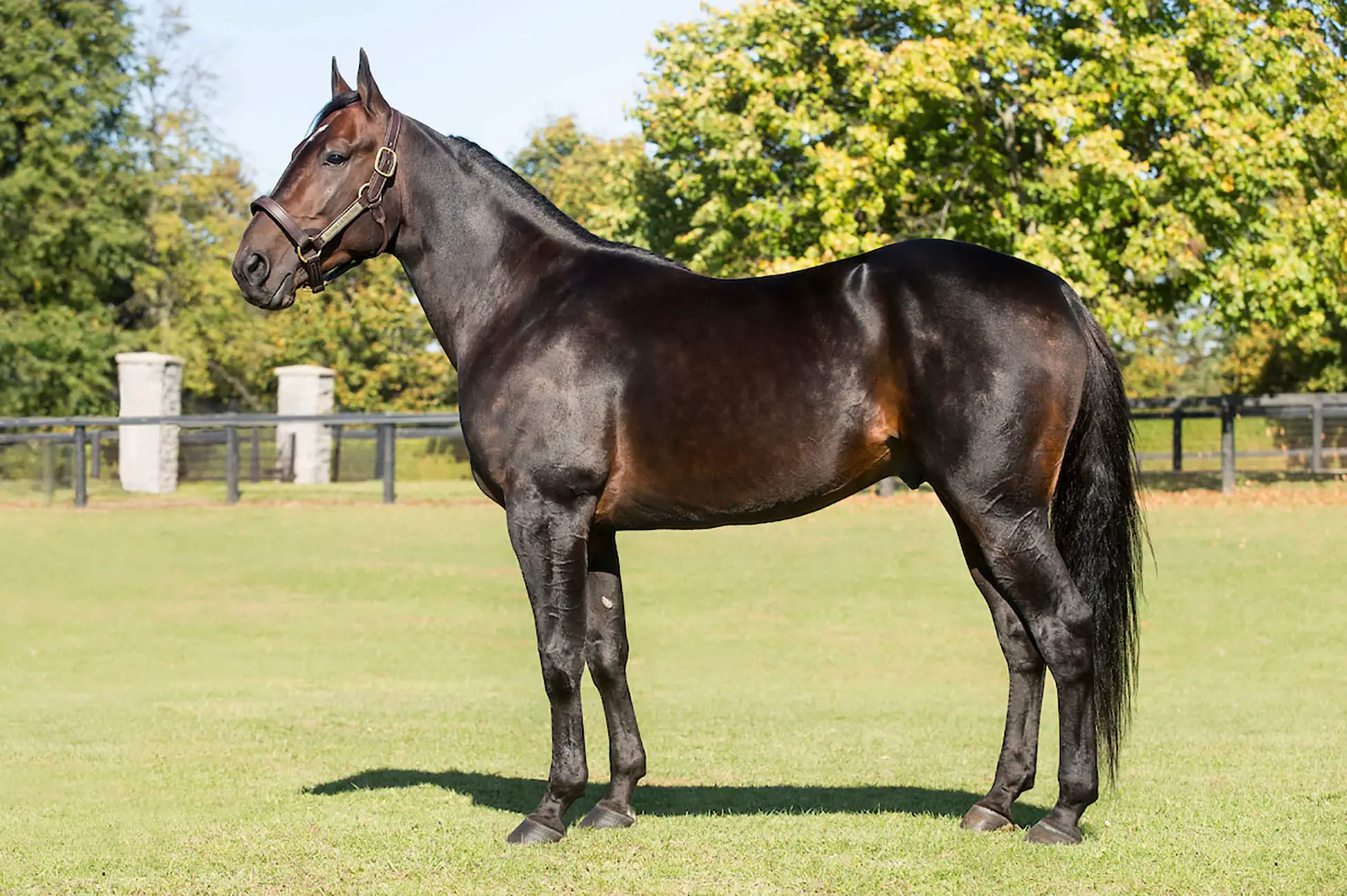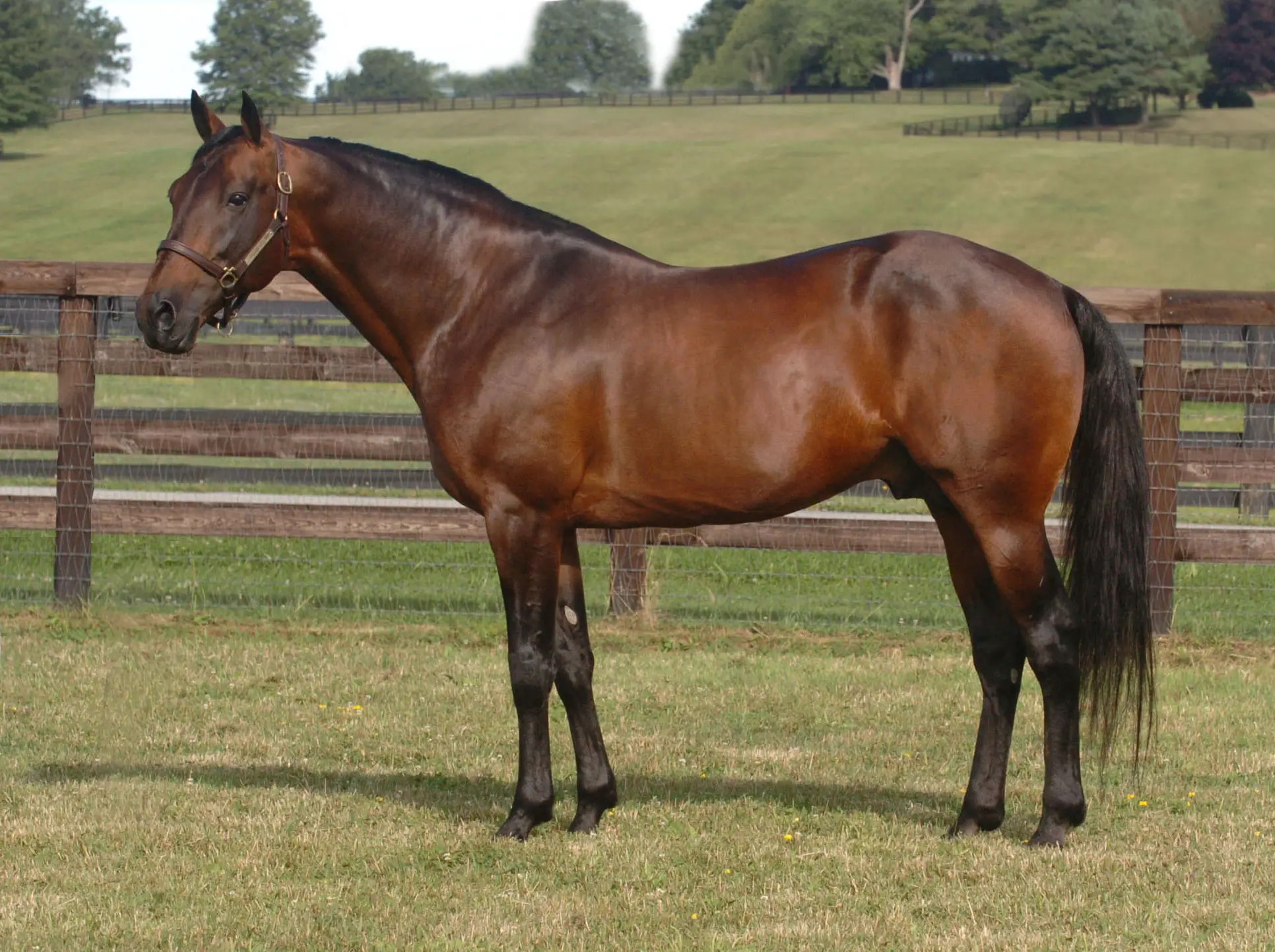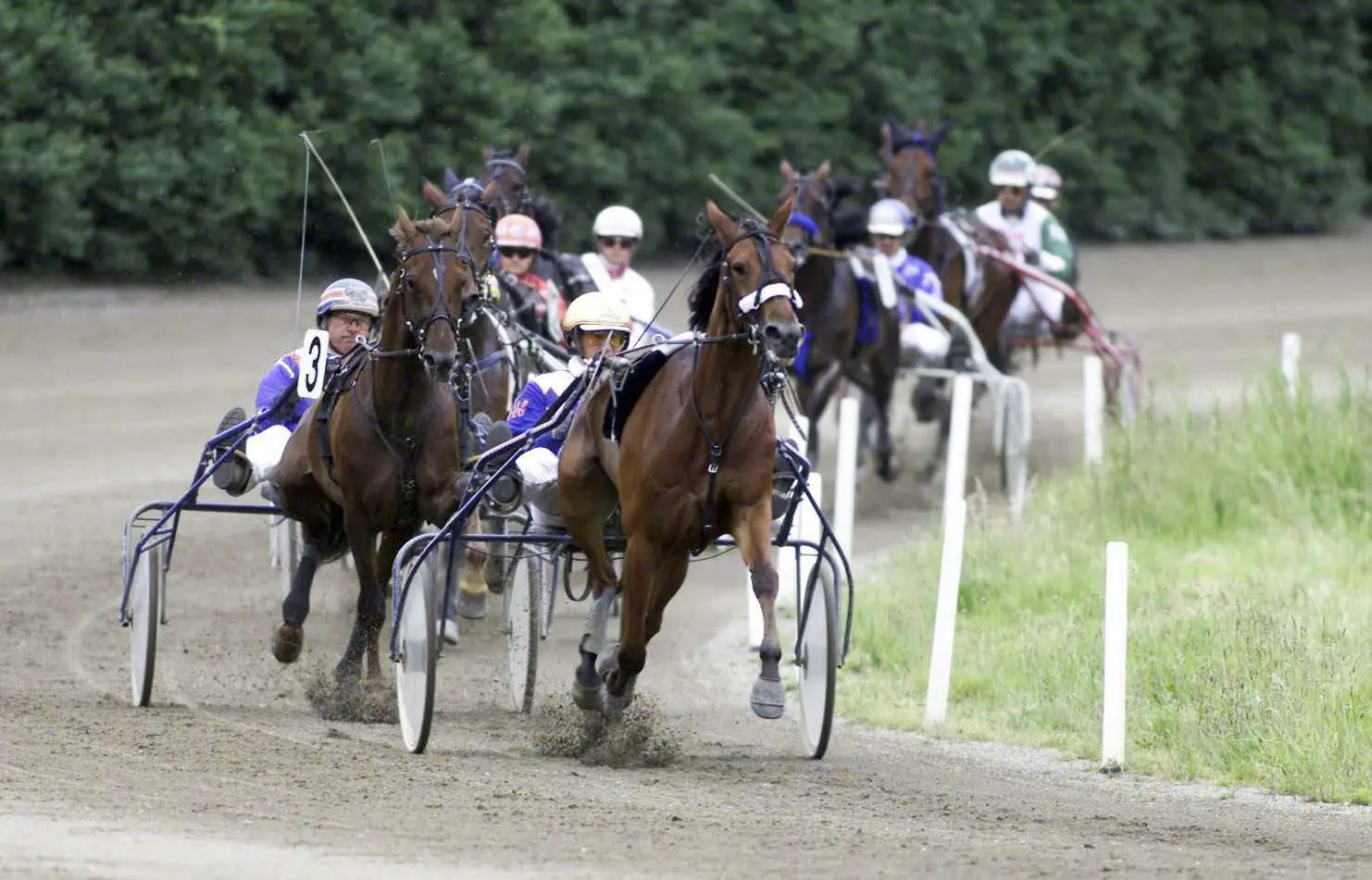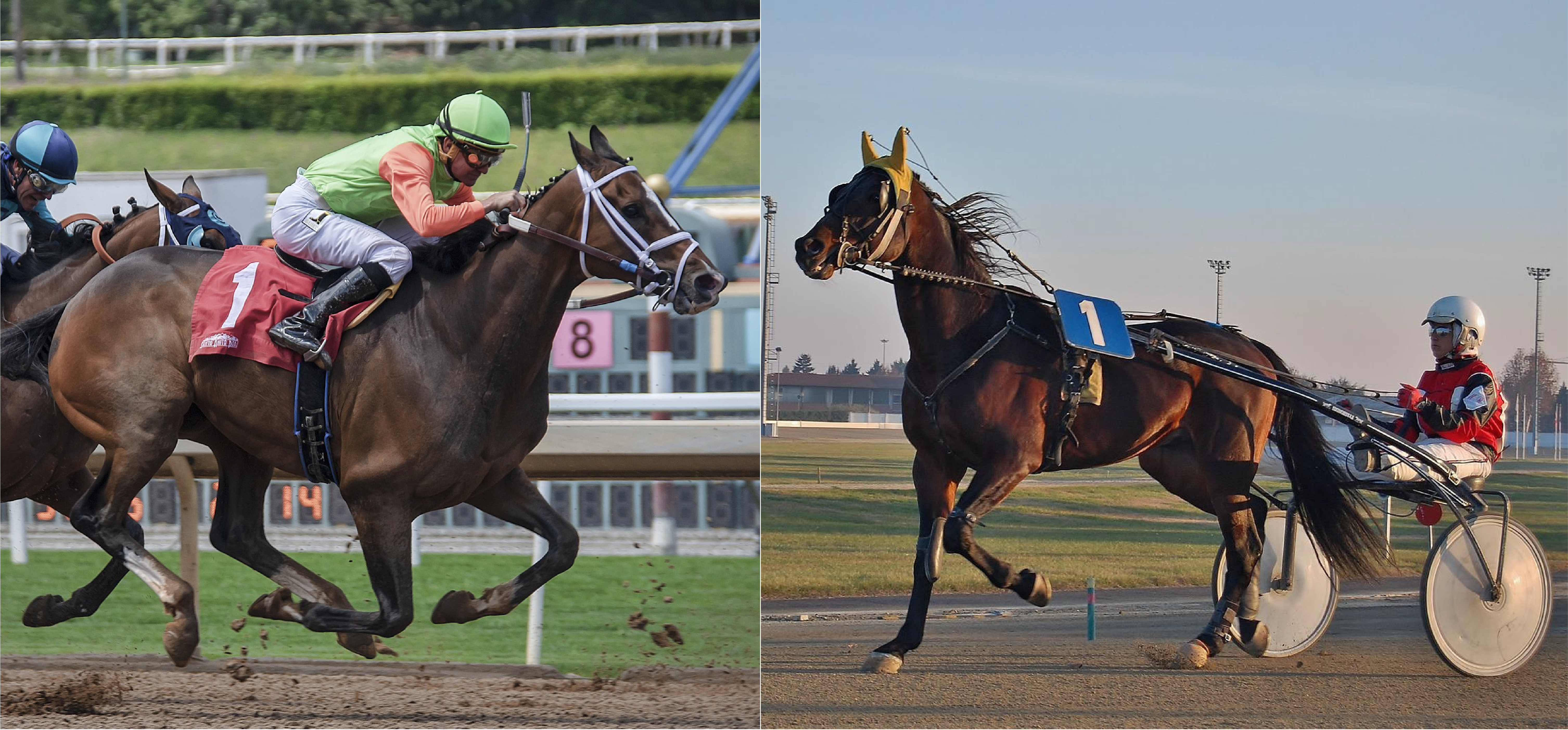A standardbred horse is a breed of horse that is used for harness racing. It is also known for its athleticism and speed. The standardbred is known for its versatility, as it can be used in a variety of disciplines. This article will provide an overview of the standardbred horse, its history, and its characteristics.
History of the Standardbred Horse

The Standardbred is a horse breed that rose to prominence from its roots in England, Scotland and Ireland during the 18th century. They are known for their speed and endurance in harness racing. The breed was developed through crossbreeding of Thoroughbreds and Narragansett Pacers.
The development of the Standardbred began in the early 1700s, when a Quaker named John Day bred Thoroughbreds with Narragansett Pacers in an effort to produce a faster horse. The Narragansett Pacers were known for their speed and endurance, but their gait was not suited for racing. However, the combination of the two breeds created a horse with a smooth, gaited trot which was much faster than the Narragansett Pacers.
The breed was further refined by other breeders and by the late 1700s, the Standardbred had become the favored breed of harness racing. The name “Standardbred” was established in 1879 when the United States Trotting Register Association (USTRA) created a registry for the breed, establishing a standard for the gait of the horse. The name “Standardbred” was derived from the USTRA’s requirement that the horses must be able to trot or pace a mile in two minutes or less.
| Year | Event |
|---|---|
| 1700s | John Day crossed Thoroughbreds and Narragansett Pacers |
| 1790s | Standardbreds are favored for harness racing |
| 1879 | The United States Trotting Register Association establishes the name “Standardbred” and creates a registry for the breed |
Today, the Standardbred is the most popular breed of harness racing horse in the United States and is also used in recreational riding and driving. The breed is known for its speed and endurance, and is favored for its smooth gaited trot.
Characteristics of the Standardbred Horse

The Standardbred horse is a breed of horse that is known for its speed and athleticism. The Standardbred is an American breed, developed in the United States in the late 19th century. The breed is most often used in harness racing, but is also well-suited for other disciplines such as dressage, show jumping, pleasure riding, and more.
| Characteristic | Description |
|---|---|
| Height | Typically 15 to 16 hands high |
| Build | Athletic build, with a deep chest and strong hindquarters |
| Head | Medium-sized head with small, alert ears |
| Neck | Elegant, upright neck |
| Legs | Strong, straight legs with well-defined tendons |
| Pace | Canter and trot with speed and power |
| Color | Mostly bay, brown, and black, but can come in any color |
The Standardbred horse is known for its intelligence, endurance, and versatility. It is a hardy breed, with excellent endurance and a willingness to work. The Standardbred is also known for its speed, with many horses clocking speeds of up to 30 miles per hour in harness racing.
The Standardbred is an easy horse to handle and care for, and it is well-suited for many disciplines. It is an excellent choice for beginner riders, as well as experienced equestrians.
The Standardbred is a beautiful horse, with a noble bearing and proud attitude. It is an all-around great choice for a riding partner and companion.
Standardbred Horse Breeding

Standardbred horse breeding is a centuries-old tradition, dating back to the mid-19th century. Standardbreds are a breed of horse specifically bred for harness racing, and are known for their speed and agility.
Standardbred horses are descendants of the Thoroughbred, and are characterized by their short, strong legs and muscular bodies. They are typically bay, black, or brown in color, and often have white markings on their faces and legs.
Standardbreds can be bred for a variety of purposes, including trotting, pacing, and galloping. When breeding Standardbreds, breeders must consider a variety of factors, such as conformation, temperament, gait, and speed.
- Conformation: Standardbreds should have a strong, well-muscled body, with a deep chest and wide chestnuts. They should also have a short back, with a relatively short neck and a well-defined wither. The legs should be straight and strong, with a good angle of hock, and the hooves should be well-formed and well-proportioned.
- Temperament: Standardbreds should have a calm, even temperament, free from nervousness or aggression. They should be willing to work, and should have good intelligence and a good sense of balance.
- Gait: Standardbreds should have a fluid, balanced gait, with good coordination and a smooth, even rhythm.
- Speed: Standardbreds should be able to reach high speeds, and should have good acceleration and stamina.
When breeding Standardbreds, breeders should pay attention to the temperament, conformation, gait, and speed of the horses. By breeding horses with desirable characteristics, breeders can ensure that the horses they produce are of the highest quality.
Standardbred Horse Health

Standardbred horses are generally very healthy and hardy horses. However, like any breed, they can suffer from health issues, some of which are breed specific. Here is a list of the most common health issues seen in Standardbred horses:
- Joint issues – due to their conformation and their athletic nature, Standardbreds are prone to developing joint issues such as arthritis, tendonitis, and navicular syndrome.
- Colic – Standardbreds are more prone to colic than other breeds.
- Respiratory issues – due to their short faces and heavy breathing, Standardbreds can be prone to respiratory issues.
- Laminitis – Standardbreds are more prone to laminitis than other breeds.
- Cushing’s Disease – Standardbreds are more prone to Cushing’s disease than other breeds.
It is important for Standardbred owners to be aware of the potential health issues and take preventative measures to ensure the health of their horse. This includes providing high-quality feed, regular veterinary check-ups, and a regular exercise program. It is also important to be aware of any changes in your horse’s behavior or physical condition, as this could be a sign of a health issue.
Standardbred Horse Performance

Standardbred horses are known as trotters and pacers, and are mainly used for harness racing. The main purpose of Standardbreds is to race, and they are bred to excel in speed and performance.
Standardbreds are known for their ability to trot and pace, and have an even, consistent gait that is admired by horse racing fans around the world. They are known for their speed and agility, and have the ability to reach speeds of up to 40 miles per hour.
In harness racing, Standardbreds are driven by a driver, and the driver must be able to keep the horse running at an even pace while also maintaining control over the horse. This requires a great deal of skill and experience, and many drivers are able to achieve great success in harness racing when driving a Standardbred.
The performance of a Standardbred is also judged by its ability to race. Standardbreds are judged on their ability to start quickly, maintain speed and agility throughout the race, and finish strongly. They must also be able to handle the stresses and pressures of the race track, and must be able to run in all weather conditions.
| Gait | Speed | Agility | Stamina |
|---|---|---|---|
| Trot Pace |
Up to 40 mph | High | High |
Standardbreds are known for their reliability and performance, and have been favorites for many generations of race fans. They are also known for their athleticism and strength, making them ideal for harness racing.
Care of the Standardbred Horse

The Standardbred is a hardy horse, ideal for a variety of disciplines, from harness racing to show jumping, dressage, and even western riding. As with any horse, proper care and maintenance is essential for the long-term health and safety of the Standardbred.
The Basic Care of the Standardbred Horse includes:
- Regular Grooming: Regular brushing, combing, and mane and tail care are essential for the Standardbred. This will help to keep the coat and skin healthy, and reduce the risk of infection.
- Feeding: Feeding your Standardbred the right type and amount of food is essential for its health and wellbeing. It is important to ensure that the horse has access to plenty of fresh, clean water, as well as a balanced diet of hay, grass, grain, and supplements as required.
- Hoof Care: Regular trimming and shoeing of the Standardbred’s hooves is essential for their health and safety. It is important to have the hooves trimmed and shod by an experienced farrier.
- Exercise: Regular exercise is essential for the Standardbred’s health and wellbeing. Horses should be exercised for at least an hour per day, with a minimum of three days of exercise per week.
- Veterinary Care: All horses need regular veterinary care to ensure their health and safety. It is important to have the Standardbred checked by a veterinarian at least once a year, and more frequently if required.
With the right care and maintenance, Standardbreds can be a healthy and rewarding companion for many years to come.
Standardbred Horse Racing
Standardbred horse racing is a form of harness racing, in which standardbred horses race around a track either pulling a sulky, or a two wheel cart with a driver. Standardbreds are the most popular breed of horse used in harness racing and are known for their speed and endurance.
Standardbred horses are bred for racing and often have long, muscular bodies and a strong neck, allowing them to pull a sulky or cart at a faster pace. They are also known for their agility, quickness and intelligence, making them a popular choice for harness racing.
Standardbreds are raced in a variety of events, including trotting, pacing, and even jumping. Trotting is the most common form of standardbred horse racing, in which the horse trots around the track, pulling the sulky or cart. Pacing is similar to trotting, except that the horse moves in a two-beat rhythm, alternating between the left and right legs. Jumping is a form of horse racing in which horses jump obstacles on the track.
Standardbreds are primarily raced on oval, one-mile tracks, though there are also shorter tracks for smaller horses. Races can be held indoors or outdoors, on either dirt or synthetic surfaces. Standardbred races usually have a purse, which is the prize money given to the winner.
In addition to racetracks, standardbreds are also used in show rings, where they compete in a variety of events, such as dressage and jumping. They are also used in the sport of horse driving, where they pull carriages around a track.
Standardbreds are a versatile breed of horse and can be used for a variety of tasks, including racing, show rings, and horse driving. With their agility, speed and endurance, they make a great choice for harness racing and other equestrian events.
Frequently Asked Questions
1. What activities are Standardbred Horses used for?
Standardbred horses are a type of horse bred for harness racing and are one of the most popular breeds in the world. Standardbreds are known for their speed and strength and are used in a variety of sports and activities.
- Harness Racing: Standardbreds have been bred specifically for harness racing and are the most popular breed for this sport. Harness racing is a form of horse racing in which the horses pull a cart with a driver instead of being ridden by a jockey.
- Show Driving: Standardbreds are often used in show driving, which is a type of exhibition driving in which horses are driven around a ring or course that is judged on their performance. This is a popular activity for Standardbreds, as it allows them to show off their speed, agility, and strength.
- Pleasure Riding: Standardbreds are also used for pleasure riding, which is a type of riding for leisure or recreation. Pleasure rides are often taken on trails and roads, and Standardbreds are able to handle the terrain and travel at a comfortable pace.
- Dressage: Standardbreds can also be used for dressage, which is a type of horse riding in which the rider and horse perform a series of predetermined movements. Dressage is often used to develop the horse’s agility, obedience, and balance.
- Jumping: Standardbreds are also used for jumping, which is a form of horse riding in which the horse and rider attempt to jump over a series of obstacles. Jumping is a popular activity for Standardbreds, as their speed and agility make them well-suited for the sport.
2. What distinguishes a Standardbred Horse from other Breeds?
Standardbred horses are uniquely distinguished from other horses by their breed characteristics and abilities. These include:
- Height: Standardbreds are generally smaller than other breeds, typically standing between 14 and 16 hands.
- Head: Standardbreds have a refined head with a short, broad muzzle and large nostrils.
- Neck: Standardbreds have a short, muscular neck with a well-defined crest.
- Body: Standardbreds have a deep chest and a short, well-muscled back.
- Legs: Standardbreds have short, strong legs with broad joints and clean tendons.
- Gaits: Standardbreds are known for their naturally smooth gait, with a four-beat trot and a lateral pacing gait.
- Temperament: Standardbreds are known for their calm, willing nature and strong work ethic.
These unique characteristics make the Standardbred an ideal breed for harness racing and other forms of harness driving.
3. How has the Standardbred Horse been Bred Over Time?
The Standardbred horse has been bred over time to become a versatile and hard-working breed. This breed of horse is renowned for its speed and athleticism, and has been selectively bred over the years to improve these qualities. Here is a brief overview of the Standardbred’s breeding history:
- 18th Century: The Standardbred horse was developed in the United States during the late 18th century, and is believed to have originated from the Narragansett Pacer, a breed developed in Rhode Island. The Narragansett Pacer was crossed with other breeds to create the Standardbred, which was bred for harness racing.
- 19th Century: During the 19th century, the Standardbred was selectively bred to improve its speed and athleticism. This was done by crossing the breed with Thoroughbreds, Morgans, and Canadian Pacers. This resulted in a breed that was well-suited for harness racing, and known for its speed and endurance.
- 20th Century: During the 20th century, the Standardbred was further developed to improve its performance in harness racing. This was done by crossing the breed with Hackney and Trotting horses, as well as other breeds. This resulted in a breed that is known for its speed and agility on the track.
Today, the Standardbred is still used for harness racing, but is also a popular breed for general riding, show jumping, and dressage. The breed is known for its reliability and versatility, and is a favorite among horse owners and riders.
4. What are the advantages of owning a standardbred horse?
Owning a Standardbred horse has many advantages, which include but are not limited to:
- Their willingness to please and strong work ethic makes them an ideal horse for both beginners and experienced riders.
- Standardbreds are known for their intelligence, making them easy to train and teach new tasks.
- They are generally easy-going and calm, which makes them an ideal horse for anyone looking for a gentle companion.
- Standardbreds are known for their athleticism and strength, making them suitable for activities such as racing, show jumping, dressage, and even trail riding.
- They are known to be healthy horses, with few health issues and a long life expectancy.
- They have a pleasant temperament, meaning they are not easily spooked or scared.
- Standardbreds are relatively low maintenance, requiring minimal grooming and care.
These are just a few of the advantages to owning a Standardbred horse. With their intelligence, athleticism, and willingness to please, Standardbreds are an ideal horse for any type of rider.
5. What are the Origins of the Standardbred Horse Breed?
The Standardbred horse breed is one of the most well-known and beloved breeds of horses. It is known for its athleticism, speed, and intelligence. But what are the origins of the Standardbred horse?
- The Standardbred horse derives its name from the fact that it had to meet certain standards of speed in order to be registered in the official stud book. This standard was set by the National Association of Trotting Horse Breeders in the United States, in 1879.
- The Standardbred horse is descended from a variety of sources, including Thoroughbreds, Morgans, Canadian Pacer, Dutch Trotter and Norfolk Trotter.
- The breed was developed by breeders in the United States and Canada in the 19th century. The breeders sought to create a breed that was fast and had a good temperament.
- The breeders used selective breeding to create a breed that was both fast and had a good temperament. This was done by crossing the different breeds together, and then selecting for the desired traits.
- The Standardbred horse is now used for racing and as a pleasure horse. It is a versatile breed that is well-suited for a variety of equestrian pursuits.
Conclusion
The Standardbred horse is an incredibly versatile breed, with a long and rich history of success in racing, harness sports, and equestrian disciplines. They are known for their intelligence, speed, and athleticism, as well as their gentle and friendly nature. With their strong work ethic and loyal personalities, Standardbreds make wonderful companions, and their versatility makes them ideal for a variety of activities, from racing to pleasure riding. With their hardworking attitudes and willingness to please, Standardbreds are sure to bring joy and success to any rider.



